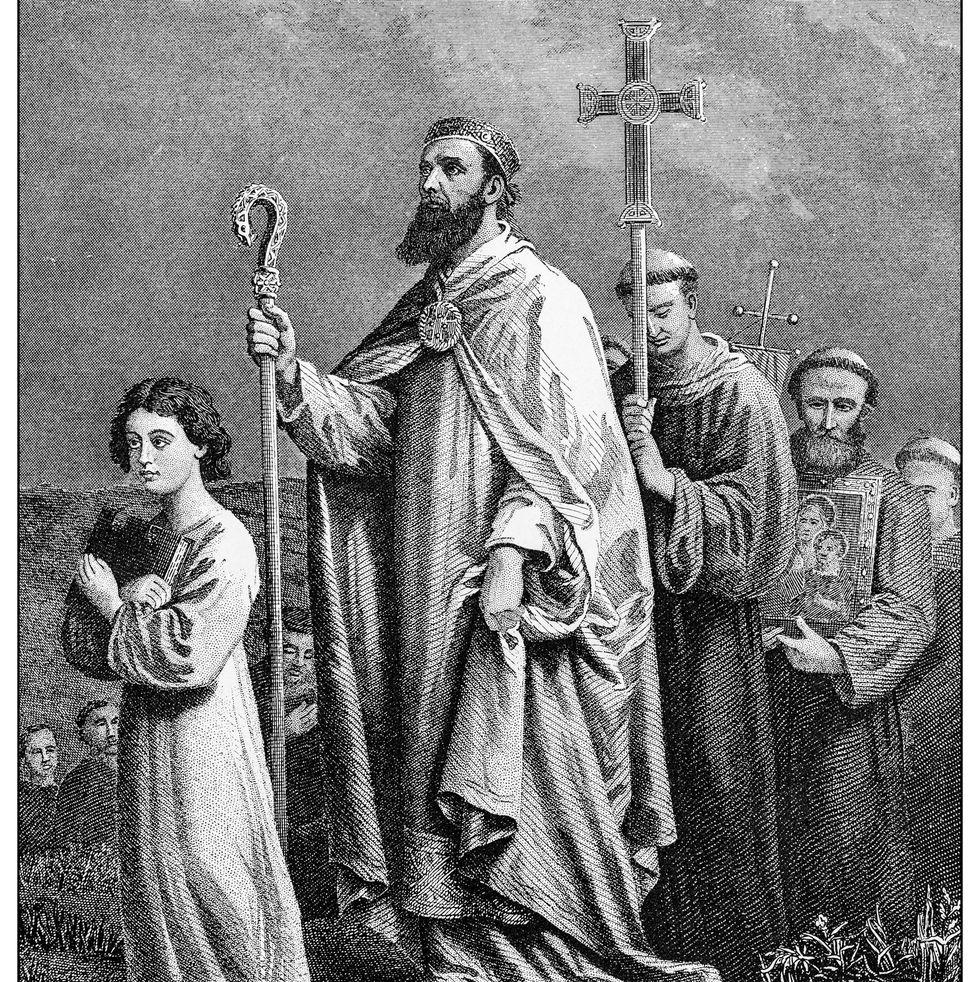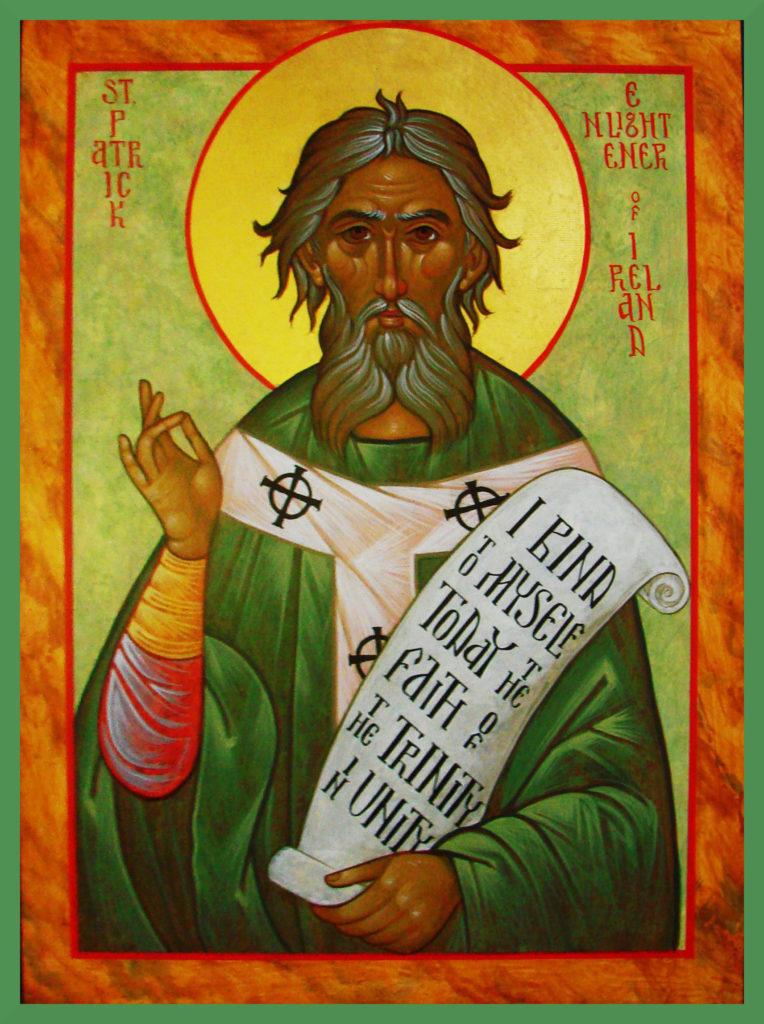Unveiling the History of St. Patrick’s Day: Origins, Traditions, and Evolution
A lively dive into St. Patrick’s Day
History: St. Patrick's Day
By Robert Matsumura, Contributing Writer
A lively dive into St. Patrick’s Day
History: St. Patrick's Day
By Robert Matsumura, Contributing Writer

D id you know that the color originally associated with Saint Patrick was blue, and that pubs were closed on the day we celebrate this holiday? Delving into the history of Saint Patrick’s Day and the traditions associated with it provide a glimpse not only into this fascinating holiday but into Irish history as well.
Today, shamrocks and green beer are common Saint Patrick Day traditions. In 1631, however, when the Church established March 17th as a feast day honoring St. Patrick, such traditions were non-existent. While the celebration of Saint Patrick dates back to 1631, the man himself was even further removed in history. So who was Saint Patrick and when did he actually live? Marion Casey, a professor of Irish Studies at New York University admits that information on the famous saint is scant at best. “We know he was a Roman Citizen, because Britain was Rome then, and then he was enslaved and taken to Ireland, where he either escaped or was released.” This man, later known as Saint Patrick, became a priest and returned to Ireland where he was instrumental in converting the followers of Druidic culture to Christianity. As the story goes, St. Patrick’s birth name was Maewyn Succat, but at some point in time, he changed his name to Patricius — a name whose Latin roots are associated with the concept of fatherhood, or a father figure.

It wasn’t until the 18th century that St. Patrick’s Day celebrations began to ramp up and assume the form we associate today with the holiday. As St. Patrick’s Day falls during Lent, it functioned as a day off, so to speak, from the prescribed abstinence leading up to Easter. In fact, the celebrations became so excessive that the Church felt compelled to remind people of the religious significance of the holiday. The symbol it chose to commemorate Saint Patrick was the shamrock. Not only was this clover leaf already ensconced in Irish culture and lore dating back to pre-Christian times, but its classic three-leaf shape directly corresponded to the number three — a number associated with the Holy Trinity. The story went that when Saint Patrick returned to Ireland, he employed the shamrock as a symbol to illustrate the Trinity to the heathen masses he was striving to convert to Christianity.

Throughout the 1700s, St. Patrick’s Day traditions continued to evolve. Despite the fact that the holiday originated in Ireland, the first St. Patrick’s Day parade actually took place across the Atlantic in New York City in 1762. It wasn’t until the Irish Rebellion of 1798 that the color green was associated with St. Patrick’s Day. Prior to the rebellion, blue was the standard color linked to Ireland, as it was featured in the royal court and also present on the ancient flags of the country. In contrast to the famous red of the British military, the Irish adopted green as their color, proudly singing “The Wearing of the Green” during the war, thus cementing green as the national color of Ireland.
As for the current traditions common to St. Patrick’s Day, one might assume they originated in Ireland. Contrary to popular belief, however, a number of these familiar traditions were born right here in the U.S. One such American invention was green beer which traces back to an Irish-American physician, Dr. Thomas Hayes Curtain, who in 1914 added a drop of blue coloring to beer, turning it green. The coloring utilized by the doctor was referred to as “blue wash,” an iron powder solution with dye intended to brighten up white clothing. Unfortunately, beer at the time contained acetaldehyde, which not only adversely affected the flavor of the beer, but reacted negatively with the blue wash, making the St. Patrick’s Day imbibers ill. Fortunately, today’s green beer is made with a drop or two of blue or green food coloring and acetaldehyde is no longer an ingredient in beer. While other towns and individuals claim to have invented green beer, historians tend to give Dr. Curtin the nod.
Speaking of turning things green for St. Patrick’s Day, how about an entire river? In 1962 when city workers used dyes to trace the source of illegal sewage dumping in the Chicago River, they applied a St. Patrick’s Day concept. Injecting 100 pounds of green vegetable dye into the river, they were able to turn it green for an entire week. Today, in an effort to be environmentally conscious, only 40 pounds of dye are used, turning the river green for a matter of hours rather than days.
When it comes to food, the typical St. Patrick’s Day classics are corned beef and cabbage: traditional Irish food, right? Not so fast. In truth, traditional St. Patrick’s Day fare in Ireland would have consisted of Irish Stew and soda bread, or perhaps a meal of pork and potatoes, which were less expensive than beef. Food historians suggest that struggling Irish immigrants likely substituted beef and cabbage for pork and potatoes, which at the time were more expensive.
Another fact that might blow people’s minds today is that until 1970 pubs were closed in Ireland on St. Patrick’s Day in observance of its status as a religious holiday. Subsequently, laws were passed to have the pubs open on March 17th, a move which, as you might imagine, was embraced by business owners and promoted heavily. An official campaign by the Irish government was launched in 1995 to spur tourism to the country by marketing St. Patrick’s Day and Irish culture abroad.

Today, St. Patrick’s day is celebrated not only in Ireland, but throughout the world, particularly in North America and Australia. St. Patrick’s Day celebrations take place as far from Ireland as Japan, Singapore and Russia. What began in Ireland as a religious holiday, and later expanded to represent Irish culture and nationalism, was embraced by people around the world as a day to make merry, appreciate Irish traditions, and knock back a pint or two while enjoying corned beef and cabbage, soda bread, and perhaps a hearty bowl of Irish stew. So the next time you’re donning a bit o’ green for St. Paddy’s day, propose a toast not only to old Saint Patrick, but to the rich historical evolution of this fascinating holiday!





